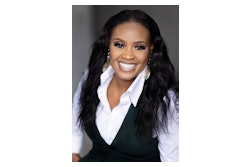On average, female professors at the University of Iowa make less money than their male counterparts.
According to an April report by the American Association of University Professors, women who are full professors at the UI make 85.3 percent what men do in the same position. The UI has the largest gap among the three regent universities and Big Ten institutions for full professors.
There are three professor ranks: full, associate and assistant. The ratio for associate professors is 92.1 percent and 90 percent for assistants.
Gwendolyn Gillson, a religious studies Ph.D. student hoping to become a professor, wrote in an email that academia is making “some good progress towards gender equality, but there is still a long way to go.”
“I would like to say that I’m surprised that a pay gap persists, but I’m not,” Gillson said. “I’ve seen so many explanations for why the pay gap exists, and none of them are satisfactory. I think the only way that the gap will disappear is when everybody realizes how important this issue is to a fair and equitable society, but so far, we’re not to that point yet.”
Female full professors at Michigan State University are paid 96 percent what males are, the lowest difference in the Big Ten.
Jayne Schuiteman, the interim director of the Michigan State Women’s Resource Center, was “delighted” at the news, but she emphasized fewer women become full professors, which she said is an issue that still needs to be addressed.
Nationally, around a quarter of full professors are women, while about 40 percent are associates and 45 percent are assistants.
John Curtis, the professors’ association director of research and public policy, said women are more likely to be employed in lower-paying humanities and social-science positions, rather than natural sciences, law and business.
“This is a very broad generalization, but women are more likely to be employed in humanities and the social sciences and less likely to be in faculty positions in the natural sciences, for example, and also less likely to be employed in business and law, which are two big factors in terms of salary because the salaries there are so high,” he said.
Kevin Leicht, a UI sociology professor and department head, has researched gender inequality among professionals. He said discipline differences exist at UI.
“I’m guessing one of the biggest differences is probably the very large difference in wages between the west side of the river and the east side of the river,” Leicht said. He said men have historically dominated the law and health-science fields.
Curtis said various reports show, even when accounting for factors such as disciplines and experience, a gap of 5 to 10 percent still exists nationally.
He attributed the remaining difference to “subtle discrimination” against women.
Gillson said there is a stigma against women with an interest in science and math.
“I remember, growing up, I was the only girl in advanced math classes with 10 boys, and all the girls thought I was crazy for it,” she said. “I always felt like I was the weird one because I liked science and math, and I know I’m not the only woman to feel like that, which might help explain why women tend to cluster in lower-paying disciplines.”
Dean John Keller of the Graduate School said the college tries to make salaries equitable for new appointees fresh out of graduate school. However, he said, it is more difficult to make up for entrenched gaps given limited resources and salary increase gaps.
He also noted a greater push over the past decade to encourage women to join STEM fields. Leicht said university salary gaps are difficult to close.
“The only places where revolutionary changes in the wage gap happen, when they happen at all, is usually among the new hirings, and since new hirings represent a tiny portion of all the people who work at a university, the wage gap doesn’t change very much,” he said.


















